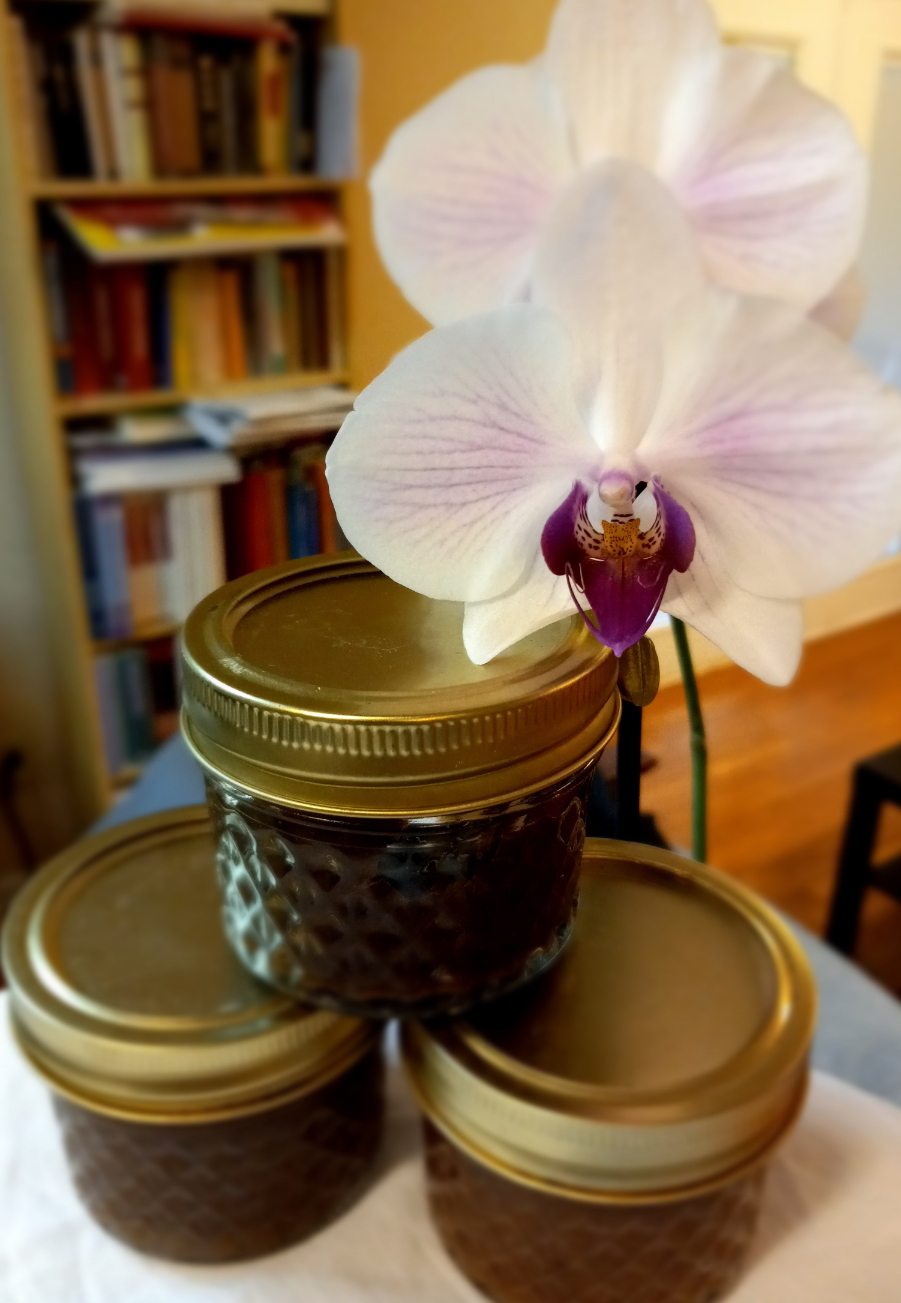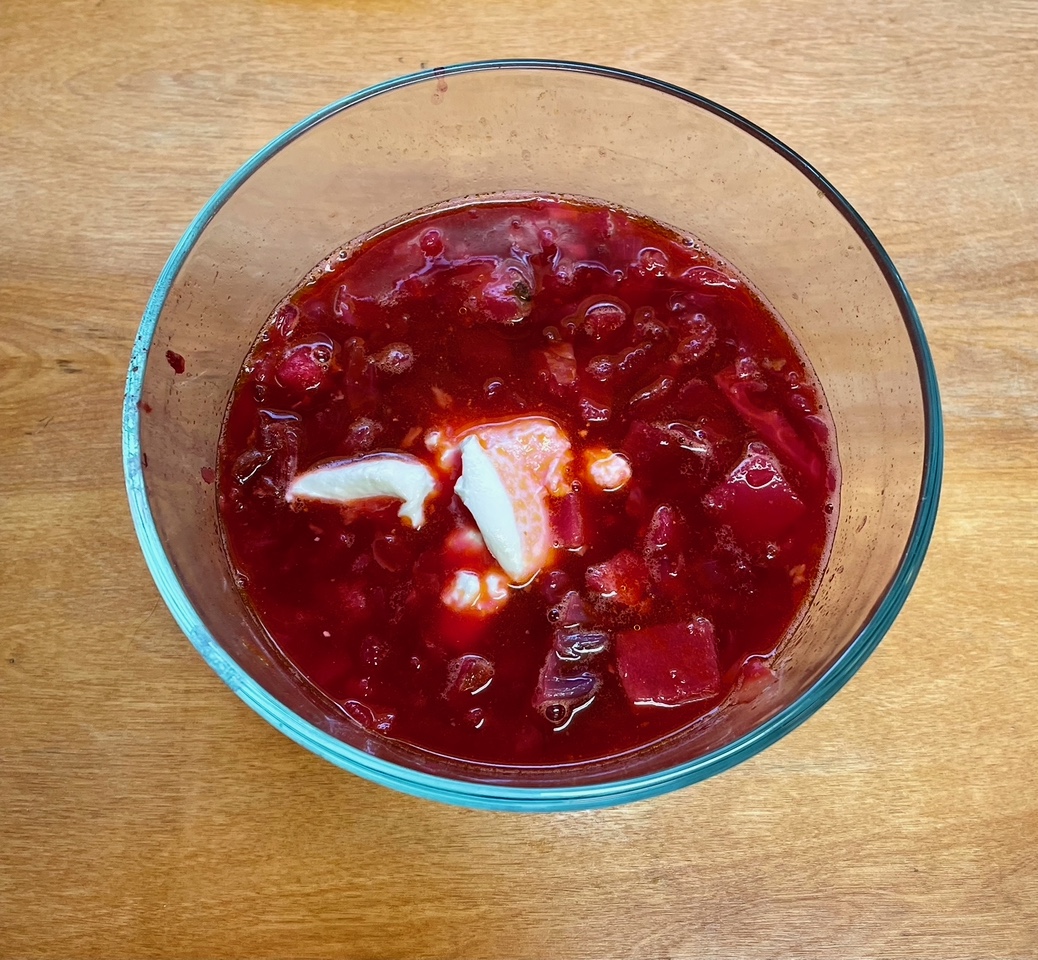Blog : Recipes
A Comforting Breakfast — or Anytime — Meal that Your Stomach Will Enjoy By Yon DeonJang Joog (된장죽)
DeonJang Joog
Ingredients
3 cups broth, such as bone, chicken, beef, seafood or vegetable
1 cup cooked rice
1 cup cabbage, thinly sliced
1 cup potatoes, thinly sliced
2-3 garlic cloves, minced
1 tablespoon DoenJang (fermented Korean Soybean Paste - can be found at a Korean grocery store or J Mart in Peachtree City)
1 tablespoon olive oil
1 small avocado (optional; add for a buttery flavor)
Instructions
- Mix the tablespoon of DoenJang into the prepared broth. Be sure it's blended well and that the soybean paste is not in chunks. Set aside.
- Warm the tablespoon of olive oil in a saucepan over medium heat. Sauté the sliced potatoes and cabbage.
- Add the DoenJang mix broth to the saucepan.
- Cook on medium heat until it comes to a hard boil.
- Add the cooked rice and minced garlic. Stir gently.
- Boil for one to two minutes. Then reduce the heat to low and simmer for 10 to 15 minutes until all the ingredients are fully mixed. The consistency should be similar to porridge.
- If you'd like to add tasty, buttery flavor, mix the avocado in your bowl of DoenJang Joog just before eating.
- Enjoy it!!
Worthwhile Tips
- The thickness of the DoenJang Joog is up to you. You can adjust it by using less or more of the broth or rice.
- The saltiness of this meal is also adjustable; just add or reduce the amount of DoenJang.
- You can add other main ingredients, such as spinach, mushrooms and thinly sliced meat or fish.
- If you do not have cooked rice, wash a cup of rice and soak it in water overnight or a few hours before you make the DoenJan Joog. The longer the rice is soaked, the easier it is to cook.
- To keep cooked rice on hand, you can cook a lot of rice, place small servings of it in zip-locked bags and store them in the freezer.
I hope you all try this, enjoy it, share it with your loved ones and create your own favorite versions of DoenJang Joog!
A Quick Guide to Quick Pickles
When we first talk about how a patient can "jump-start" their digestion, people often ask, "If raw veggies are not very digestible, then what can I do instead?" The answer to that question is PICKLES.
Also known as refrigerator pickles, 'quick pickles' are an easy and fast way to prepare tasty summer veggies that retain the satisfying summer crispy snap that people love about eating raw vegetables. No canning is needed!
Pickling is a time-honored way to preserve the nutrients in fresh produce. As with the fermented pickles, quick pickles are also easy to digest.
A wide variety of vegetables can be quick-pickled, like cucumbers (obviously), carrots, radishes, zucchini, summer squash, green beans and cherry tomatoes. Prep the veggies; they can be halved, sliced or left whole.
Pack them in a wide-mouth jar and add any spices you wish. Dill, garlic and peppercorns are traditional choices, but this is an opportunity to get creative - try ginger, turmeric or red pepper flakes.
In a saucepan and over high heat, bring the brine - half-vinegar and half water with some salt and/or sugar - to a boil. Pour it over the veggies, leaving some air space. Tap the jar to remove air bubbles, screw on the lid and pop it in the fridge.
Wait at least a few days before enjoying your pickles. The taste will improve as they age.
For more information and a detailed recipe, check out this blog post!
Bone Broth
Based on a traditional cooking method, bone broth has been happily gaining in popularity over the past few years. It’s a slowly simmered stock made from animal bones and connective tissues. Different types of bone broth include beef, chicken and fish broths.
David Toone shared the nutritional principle, “if you want to build good bones, you’ll get the best nutrients from bones. And brain health is extension of the bones’ marrow.”
Bone broth adds ‘yang,’ or warmth, into our systems, and it’s rich in minerals like calcium, he explained. “So, you’re getting a lot of minerals and a high nutrient content from bone broth. You get a lot of the benefits of meat in a more digestible form.”
Beef Bone Broth
- About 4 pounds beef marrow and knuckle bones
- 3 pounds meaty rib or neck bones
- 4 or more quarts cold filtered water
- 1/2 cup vinegar
- 3 onions, coarsely chopped
- 3 carrots, coarsely chopped
- 3 celery sticks, coarsely chopped
- Several sprigs of fresh thyme, tied together
- 1 teaspoon dried green peppercorns, crushed
- 1 bunch parsley
Good beef stock/bone broth must be made with several sorts of bones: knuckle bones impart large quantities of gelatin to the broth. Marrow bones impart flavor and the particular nutrients of bone marrow. Meaty rib or neck bones add color and flavor.
Place the knuckle and marrow bones in a very large pot with vinegar and cover with water. Let stand for one hour.
Meanwhile, place the meaty bones in a roasting pan and brown at 350 degrees in the oven. When well browned, add to the pot, along with the vegetables.
Pour the fat out of the roasting pan, add cold water to the pan and set over a high flame. Bring it to a boil, stirring with a wooden spoon to loosen the coagulated juices. Add this liquid to the pot.
Add more water, if necessary, to cover the bones. The liquid should be no higher than within one inch of the rim of the pot, as the volume expands slightly during cooking.
Bring to a boil. A large amount of scum will rise to the top; it’s important to remove this with a spoon. After you’ve skimmed the broth, reduce the heat and add the thyme and crushed peppercorns.
Simmer stock for at least 12 hours, or as long as 72 hours. Just before finishing, add the parsley and simmer another 10 minutes.
You’ll have a pot of rather repulsive looking brown liquid with globs of gelatinous and fatty material. It doesn’t even smell particularly good.
Don’t despair! After straining, you’ll have a delicious and nourishing clear broth that can be enjoyed on its own or as a base for other recipes, like soups and stews.
Remove the bones with tongs or a slotted spoon. Strain the stock into a large bowl. Let it cool in the refrigerator and remove the congealed fat that rises to the top.
Transfer the broth to smaller containers and refrigerate or freeze for long-term storage.
Variations to the beef stock are lamb stock (use lamb bones, especially the neck bones and niblets, for a delicious stock) and venison stock (use venison bones, especially the feet of the deer and a section of antler, if possible).
Some tips from David
- When possible, include cartilage and tendons as well as bones.
- If you get the bone mix right, it becomes gelatinous when cooled, and especially when refrigerated. It will liquify again when it’s heated up.
“That’s when you know it’s really good,” he said.
Apple Butter

The arrival of Fall brings chilly morning, warm colors, and cooler evenings. It’s the time of year leaves begin to change. The great debate about pumpkin spice starts up again. And, it’s time to go apple picking!
The Georgia mountains have some glorious apple orchards with a season that runs from late August to October.
When you find you have more apples than could possibly be eaten, do like we do, and make some apple butter in your crockpot. Here’s the recipe:
Quick Pickles
More than just an old-fashioned way to preserve food, pickled veggies are a delicious way to help your digestion. Most of the time, people think of this as a labor-intensive process and think they're too busy to make it for themselves. It doesn't have to be that way! You can make pickles at home, it's super easy and gives you more control over what goes in your body.
Here's a recipe featuring the most popular pickled veggie, the one that we all think of when we hear pickles- the cucumber.
Recipe of the Month: Cracked-Wheat Porridge
The recipe for June is a cracked-wheat porridge, or khichda, from the book 660 Curries by Raghavan Iyer. This porridge is favored by the Bohri Muslims in India.
Special Recipe: HOT RED KYIV BORSCHT
A favorite of David's, this Ukrainian Borscht comes from Greene on Greens, by Bert Greene. The beets are shredded directly into the stockpot and turn the stew into a very bright pink.

Recipe of the Month: Yon’s Korean Porridge
Yon's Korean Porridge Recipe
This is a great recipe for any meal but especially when you are not feeling well. The thickness of this porridge is up to you -- you can make it thicker by using less water or thinner by using more. You can use plain water, rice water, veggie-stock, chicken or beef broth depending on the flavor you want.
Recipe of the Month: TaiYang Tea
In addition to the hot bath strategy, people can drink this Ginger Jujube Date Tea.
 Fill a small pot with about three cups of water and bring to boil. Add about 2 scallions, cut into 2” pieces (use the roots as well), 15g of jujube dates, and 6 sliced fresh ginger root about 1/8” thick. Bring to a boil then reduce to a low boil and simmer for about 20 minutes. Strain into a large mug, allow to cool until it’s tea temperature and drink it hot.
Fill a small pot with about three cups of water and bring to boil. Add about 2 scallions, cut into 2” pieces (use the roots as well), 15g of jujube dates, and 6 sliced fresh ginger root about 1/8” thick. Bring to a boil then reduce to a low boil and simmer for about 20 minutes. Strain into a large mug, allow to cool until it’s tea temperature and drink it hot.
The Jujube dates can be easily purchased from an Asian grocery store is it is a commonly used culinary herb. If you would like to stop by the office to get some, we can set you up.
Recipe of the Month #2: Chez Panisse’s Turkey and Gravy
To make sure that we have the most flavorful bird possible (or if you are trying to convert someone to they way of the Fire Chicken), we try to brine our turkey for Thanksgiving using this recipe.
INGREDIENTS:
- 2 1/2 gallons cold water
- 2 cups kosher salt
- 1 cup sugar
- 2 bay leaves, torn into pieces
- 1 bunch fresh thyme, or 4 tablespoons dried
- 1 whole head of garlic, cloves separated and peeled
- 5 whole allspice berries, crushed
- 4 juniper berries, smashed
INSTRUCTIONS:
